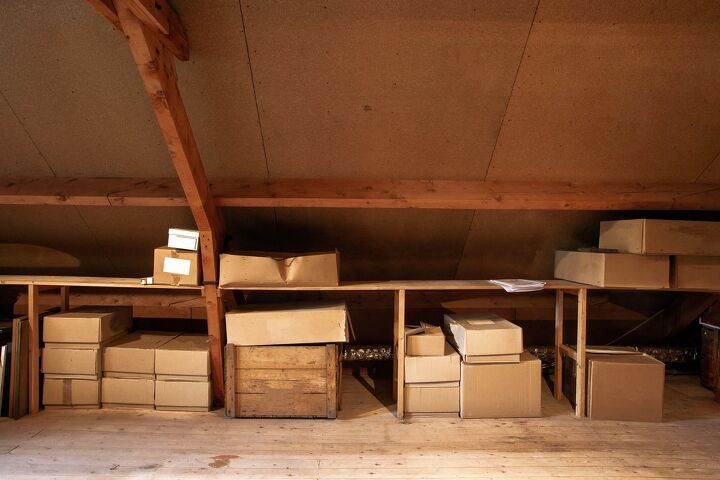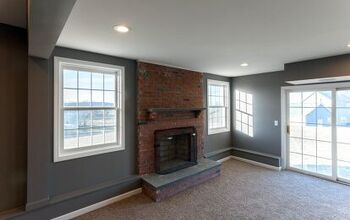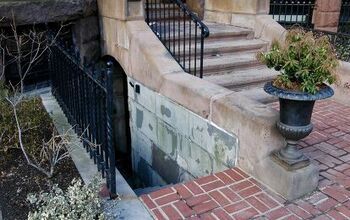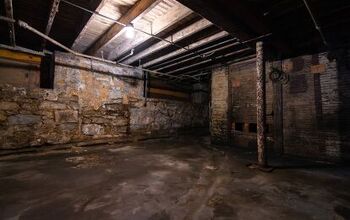What Is A Texas Basement? (Find Out Now!)

Have you ever come across the term “Texas basement” on a listing for a home? If you have, it is understandable why that would be confusing, especially when you find out what it is. That is because a Texas basement is not even a basement at all, but what is it?
A Texas basement is an attic on the second story of a home or above a garage. You can access a Texas basement by a hallway or door, and they are often used for storage. Some homeowners use a Texas basement as an additional bedroom.
The term is understandably confusing as Texas basements are not basements at all. Follow along as we explore the ins and outs of Texas basements.
Do You Need Basement Remodeling Services?
Get free, zero-commitment quotes from pro contractors near you.

What Is a Texas Basement?
A Texas basement is not a basement, but instead, it is an attic. You can enter a Texas basement through a hallway in most cases. Some Texas basements serve as hidden storage, and you can only access them through a closet door.
The term is somewhat of a joke about the fact that basements are not common in Texas. Texas basements serve the same purpose as real basements in many cases. Homeowners in Texas generally use Texas basements for storage, but they work as living spaces as well.
However, Texas basements are often small, stuffy, and cramped. Bigger Texas basements work well as an attic apartment, and you can even rent one out for additional income.
Why Are There No Basements In Texas?
There are basements in Texas, but they are uncommon because the frost line is shallow. The soil in Texas is not accommodating for construction, especially if you require deep excavation. You need to use an excavator to build a basement in Texas, and that can take a lot of work with the quality of the soil.
It is difficult to work with soil that is too wet or too dry, and the latter is often the problem in Texas. Some builder-owners include basements in their designs, but they are difficult and expensive to build. Money is another major reason that you won’t find many basements in Texas.
Basements add square footage to a home, and that makes the overall construction more expensive. You can find plenty of basements in Texas, but they are not the standard and the average home doesn’t have one.
Pros and Cons of a Texas Basement
Just like any part of the house, Texas basements have their pros and cons. Let’s take a look at the benefits and downsides of a Texas basement.
What Are the Benefits of a Texas Basement?
Texas basements, or attics, are useful and beloved by many homeowners. Some of the main benefits of owning a home with a Texas basement include:
- You can use your Texas basement for extra storage. Texas basements are attics, and attics are generally used for storage. It is nice to have the extra attic storage space, especially if you live somewhere like Texas where basements are quite uncommon.
- Texas basements can help regulate the temperature in your home. You can ensure great airflow and a consistent temperature if your Texas basement attic is properly sealed and insulated.
- Homeowners can rent out their Texas basement as a room for extra income. Make sure that there are no loose particles in your Texas basement and use it to help pay the mortgage. It is only safe to sleep in a Texas basement if it is safe and free of dangerous floating materials.
What Are the Downsides of a Texas Basement?
Texas basements are a great use of space, but they are not without their faults. They aren’t much more than an attic, and Texas basements have many of the same downsides as traditional attics. Some of the issues that homeowners have with Texas basements include:
- It can be unsafe to use a Texas basement as a living space. Attics, or Texas basements, often contain hazardous materials and particles that can fill the air. It is dangerous to breathe them in and that makes them unsuitable to sleep in or store important items.
- Roof and attic leaks are common, and they can damage your Texas basement. Outdated, poorly installed, or poorly insulated Texas basements are at particular risk for leaks and water damage. You can waterproof your Texas basement to prevent damage and expensive repairs.
- Texas basements are sometimes inefficient when it comes to energy and air conditioning. Attics are often hot and stuffy, and it is often difficult for an air conditioner to cool a Texas basement. Cooling a Texas basement takes a lot of AC power, and that can increase your monthly electrical bills.
- It is easy for pests such as bats, mice, and squirrels to get trapped in a Texas basement. This is especially a problem when you use a Texas basement as a living space, and pests create a major sanitary issue. You can easily get mice out of your attic, but it becomes expensive if the problem is persistent.
Do You Need Basement Remodeling Services?
Get free, zero-commitment quotes from pro contractors near you.

Summing It Up
A Texas basement is an attic that you can reach with either a hallway or a door. You can find a Texas basement on the second or top story of a home. The name Texas basement is ambiguous and is a play on the fact that the average Texas home does not have a basement.
You can safely use a Texas basement as a living space if you make sure that there are no loose materials that can be inhaled. Texas basements can help circulate air and regulate the temperature in your home if it is sealed properly. However, poor insulation and sealing can make your Texas basement inefficient and can increase your energy bills.
Related Articles

Nick Durante is a professional writer with a primary focus on home improvement. When he is not writing about home improvement or taking on projects around the house, he likes to read and create art. He is always looking towards the newest trends in home improvement.
More by Nick Durante





























